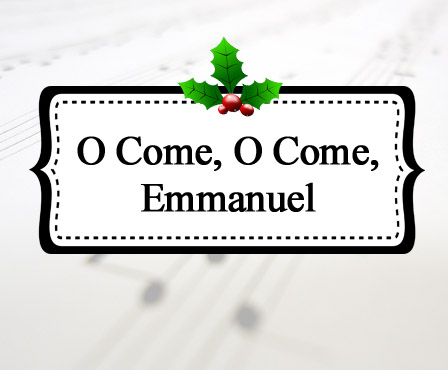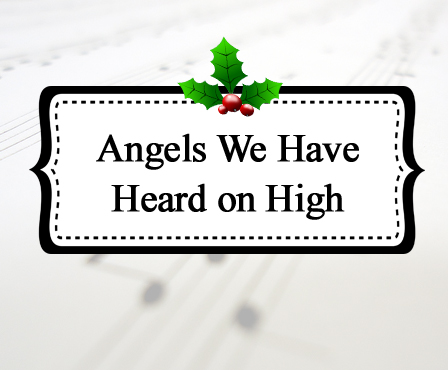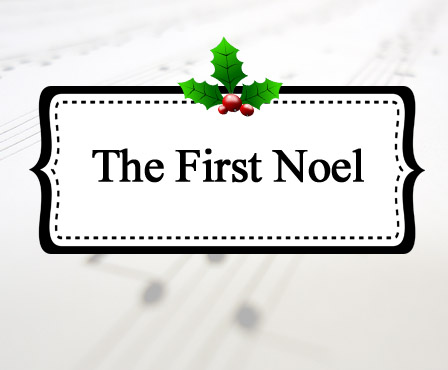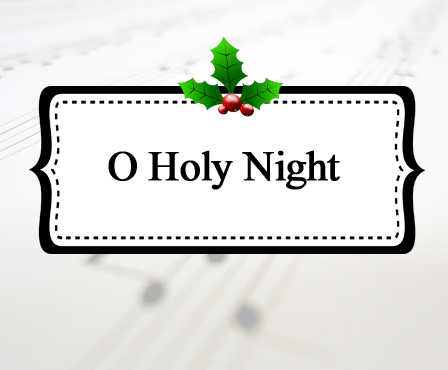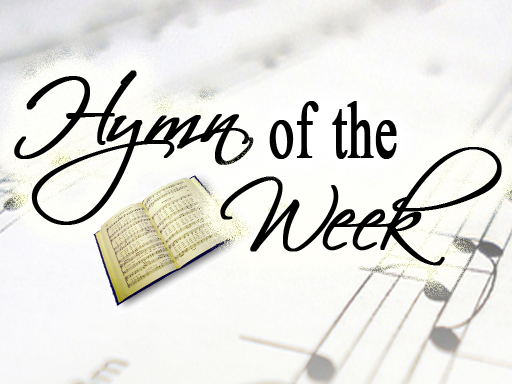O Come, All Ye Faithful
This page includes a lyric video, a brief history, sheet music, and other resources for the Christmas carol “O Come, All Ye Faithful.” Enjoy!
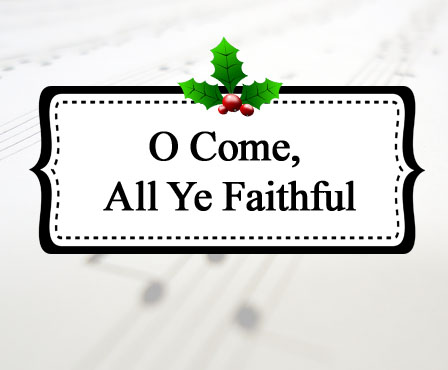
Enjoy this You Tube video with lyrics of “O Come, All Ye Faithful”:
History of “O Come, All Ye Faithful”:
The origin of this well-known Christmas carol remains a mystery. The earliest known manuscript of the tune is dated around 1740 and is attributed to John Francis Wade, a copyist and writer of church music. It appears that Wade resided primarily at the English College in France, a college established in 1568 to educate English Roman Catholics for the secular priesthood. However, since most of the eighteenth-century documents and books of the English College were either confiscated or destroyed during the French Revolution, there is very little information available about Wade. An obituary reveals that he was employed to teach “the Latin and Church song,” and that his “beautiful manuscripts abound.” Wade was said to have used a lovely calligraphy on all of his work. Though it is quite possible that Wade wrote both the music and the Latin text of the song, there is simply no way to confirm whether it is his original work or it was copied from another source. The tune name “Adeste Fideles” comes from the first words of the hymn in Latin, meaning “Be present (or near), ye faithful.”
The song can trace its increase in popularity to a 1795 performance in the Portuguese Embassy Chapel of London. The organist at the Embassy had connections with John Wade (as did many of the musicians of foreign embassy chapels in London). Apparently, the hymn made such an impression on an English nobleman (the Duke of Leeds) that he commissioned the song to be played in the famous “Concerts of Ancient Music.” The hymn quickly grew in popularity, and ironically, it came to be known as the “Porteguese hymn” (which gave the false impression that it had originated in Portugal).
Frederick Oakley, who worked at Margaret Chapel in England, translated the song from Latin to English. His fist translation began, “Ye faithful, approach ye.” Though it was never published, it “achieved considerable popularity through its use at Margaret Chapel” (The Penguin Book of Carols). Later, Oakley tried his hand at translating the masterpiece again. This time, he began with the familiar line “O come, all ye faithful” and published it in F. H. Murray’s Hymnal for Use in the English Church (1852). Since then, there have been dozens of other translations, and various editors have made alterations to Oakley’s work. Most of the popular English versions of the carol rely heavily on Oakley’s translation.
For more intriguing history on “O Come, All Ye Faithful” (and 19 other classic Christmas songs), you can purchase our Christmas Songs eBook (only $2.99; use code “celebrate20” for 20% off).
You can also download our free, complimentary Sheet Music for “O Come, All Ye Faithful”
For additional resources (like original sheet music), visit Hymns and Carols of Christmas or Net Hymnal.
This page was created by:

Back to main Christmas Songs page or our 25 Days of Christmas Music page.
We welcome your ideas! If you have suggestions on how to improve this page, please contact us.
Information on this page was drawn from our featured Christmas book.
You may freely use this content if you cite the source and/or link back to this page.
